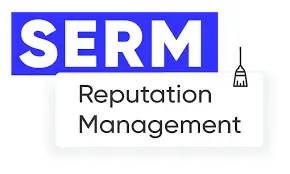Marketing has long migrated from offline to online. Everyone has seen an ad in a search result, whether it's Yandex or Google. Traditional online promotion has its own name, setup requirements, and placement selection—it all depends on the ad placement system and search engine. Let's start with the simplest and most accessible: what is contextual advertising?
Tashkent, the capital of Uzbekistan, is one of the most dynamic business centers in Central Asia. In such a vibrant market, it's crucial to stand out and reach your target audience. In this article, we'll discuss one of the most powerful tools for this purpose.

What is contextual advertising?
This type of internet marketing allows you to establish yourself online, both to your potential audience and to find new ones. Digitalization has made it possible to reach far more regions, rather than remaining confined to a single city or country.
For example, previously, a widely seen television commercial or radio broadcast could reach anywhere from a specific city to the entire country. That is, there were inherent limitations. With the advent of contextual advertising, any business can significantly expand its reach. An example would be an online store that ships worldwide. To establish a presence, it's necessary to create an information campaign, targeting audiences by age, location, search queries, and so on.
Sounds simple, right? But what does it really look like? Let's find out.
Types of contextual advertising:
- Search
- Campaigns in YAN or Google Ads Display Network
- Banners and smart banners
- Google Trading Companies
- Video format
- Targeting
This approach allows companies in Tashkent to instantly reach potential customers when they search for products or services related to your industry. Let's look at each type in detail.
Search campaign
The campaign is placed in search results. This block appears above the top 10 results and is labeled "Advertisement." These ads are placed both above and below, depending on the chosen placement. The top blocks are generally more attractive and noticeable. The top spot in the top block is among the most valuable.
The principle is simple: enter a search query, for example, "cafe with cakes Omsk." As soon as the generated search results with suggestions appear, other suggestions will appear, marked in a separate block at the top.
Matching queries entered by the user and in the advertising campaign display ads to potential users, converting them into leads.
Contextual campaign in the Yandex Advertising Network and the Google Ads Display System
The Yandex Advertising Network (YAN) is a system for placing ads on Yandex partner websites or mobile apps for the purpose of monetization. Placement occurs with existing partners who are willing to place your ads on their websites.
The Google Ads Display Network (GDN) is similar to the YAN, but placements are allowed on both Google's own platforms, such as GMail and YouTube, and on partner sites.
Each campaign is launched through the company's personal account. To access your personal account, you must log in to Yandex and Google.
Banners and smart banners
Banner advertising is a text-and-graphic type of contextual advertising. It is presented as a static image.
A smart banner differs from a standard banner in that the image is dynamic. The creative nature of these images attracts more users and often offers related products.
Google Shopping Campaigns
Google Merchant Center, also known as Shopping campaigns, is a product and product ad featured on search results pages, including price, photo, product name, and store name. This clearly shows which online store offers the product the user is interested in, its price, design, and so on. Visual examples allow prospective customers to form a clear opinion about the product before clicking on the ad.
These ads appear between the search bar and the ad unit. To launch a campaign, you need to add product information.
Video format
Beautiful, bright, attention-grabbing, and expensive—all of these can be considered video advertising. This format is being launched, for example, on YouTube. They can be placed on any other website in place of banners (the original location).
Targeting and contextual advertising
Targeting deserves a special mention. It derives from the English word "target"—a marketing mechanism that allows for the precise identification of an audience that meets specific criteria.
Contextual targeting is also divided into the following types:
- Keyword targeting. Ads are shown to audiences who enter specific queries into a search engine;
- Temporary – the campaign runs at a specific time;
- Geographic – ads work in a selected region (geolocation);
- Socio-demographic – setting by a specific age and gender;
- Retargeting – showing an audience that has previously visited the site;
- By interests – customizing advertising based on interests and preferences;
- Look alike, or similar audience – advertising for a similar target audience;
- By device – due to the different interactions users have with the site on different devices, you can limit impressions on computers, tablets, and phones;
- Hyperlocal – displays based on a precise location, such as streets or buildings.
Additionally, we can highlight behavioral technology, which takes into account the search history of users.
Advantages and disadvantages of contextual advertising
Any campaign has a number of disadvantages and advantages.
Contextual advertising (CA) is no exception, but it has a number of advantages:
1. Targeting the audience. Before launching a finished ad, the target audience is configured using pre-defined data. This data includes gender, age, location, and interests;
2. Contextual marketing allows you to reach more people because we all use the internet, searching for information, including online shopping. Properly configured advertising campaigns are immediately effective, displaying ads. This allows you to expand your audience from a single region to the entire world.
3. Analytics system. Google and Yandex display data collected from ads. This information is displayed in Google Analytics and Yandex.Metrica. The resulting data records every click, automatically counts users, and displays overall data. Based on this data, campaign success can be analyzed. If campaigns are launched for A/B testing, the success of one of the campaigns is compared. This systematic approach allows for future budget forecasting.
4. Ease of launch and setup. You decide when to run ads. You can start and stop ads at any time. Setup requires only existing data obtained from analytics systems.
5. Pay per click. Budget allocation is tailored to pay for each click on the ad;
6. Fast results. Once a contextual campaign is launched, leads and conversions begin to arrive within minutes or hours;
7. Compared to SEO, contextual advertising has a much faster effect. SEO works more slowly and is time-consuming, while advertising produces immediate results.
Advantages contextual advertising in Tashkent The advantages are obvious. Firstly, you achieve a highly targeted audience, as your ad is displayed to the people who are interested in your business. Secondly, you can accurately measure the results and effectiveness of your campaign, allowing you to optimize your budget and improve your promotion strategy.
The disadvantages include:
1. Self-configuration can be expensive due to inexperience, which threatens to waste your budget;
2. The likelihood of “attacks” from a competitor - click-through budget squandering by clicking on ads;
3. A beginner will need more time to figure out the setup. Therefore, it's best to entrust this task to contextual advertising specialists.
4. If there's money, there will be a feast. Once the allocated budget reaches 0, advertising campaigns will stop running. You'll need to re-enable them.
Advertising ROI
Contextual advertising is undoubtedly a profitable business in Tashkent. But like any other advertising, it must be effective and budget-friendly. Despite the huge costs associated with initial targeting trials, it's crucial to monitor costs to identify the most profitable advertising campaign option.
The ROI assessment of contextual advertising in Tashkent is also subject to a number of specific factors and characteristics, taking into account the regional and market context.
Monitoring helps you avoid wasting your budget. So how can you understand a campaign's ROI?
There are several options for calculating each campaign's costs and then comparing them. This comparison helps identify the most profitable campaign. In practice, it looks like this.
Here are some key ROI indicators for contextual advertising that may be important for Tashkent:
ROI (Return on Investments)t) is the return on marketing investment (ROI) indicator, which shows the profitability or loss of advertising campaigns. To calculate ROI, use the following formula: subtract expenses from total profit, divide by the original costs, and multiply by 100%. A ratio above 100% indicates a successful campaign with revenue; a ratio below indicates unprofitability.
CR – conversions. This includes target actions performed by website visitors: making a call, clicking a button, making a purchase, subscribing to a newsletter, and other actions that can be customized as needed. The calculation formula is as follows: the target action is divided by the number of visitors and multiplied by 100%.
CPA (Cost per Action) – the cost per action. It's calculated as follows: advertising costs are divided by the total number of target actions. The lower the indicator, the more profitable it is. This means that each customer action is less expensive;
CTR (Click-through rate) – ad click-through rate. It's calculated by dividing the number of clicks by the number of ad impressions. A high click-through rate is a sign of a well-tuned campaign, and the cost per click is lower, but ads are shown higher and more frequently.

There are more contextual ROI metrics, but not all of them are required. The metrics listed above are often sufficient.
The payback period for a contextual advertising campaign varies for every business. However, for many, the payback can begin in as little as 2-3 months. The most important thing is to set up contextual ads correctly. If you're launching contextual advertising campaigns for the first time, it's best to test them. A/B testing is expensive. However, it does have an effect: identifying the most cost-effective ad. This, in turn, will lead to budget savings. Therefore, it's best to entrust ad setup to professionals to avoid wasting your budget. Get a free consultation on ad setup by leaving your contact information, and we'll contact you.
Conclusion
Contextual advertising is one of the additional methods for website SEO promotion. Remember, contextual advertising, when properly configured, will bring a sufficient number of customers to your website and spread the word about your company. The effect ends when the allocated budget is exhausted. Therefore, it's best to periodically re-launch contextual advertising to maintain sales momentum and advertise your products to a wider audience.
Contextual advertising is a great way to establish yourself, expand your audience, and find potential customers ready to buy immediately. However, it's important to remember that well-designed advertising can save money and increase sales. It's important to monitor search engine ad design, select keywords, update them according to user demand, and update creatives. For greater effectiveness, it's best to use several types of online advertising simultaneously.







